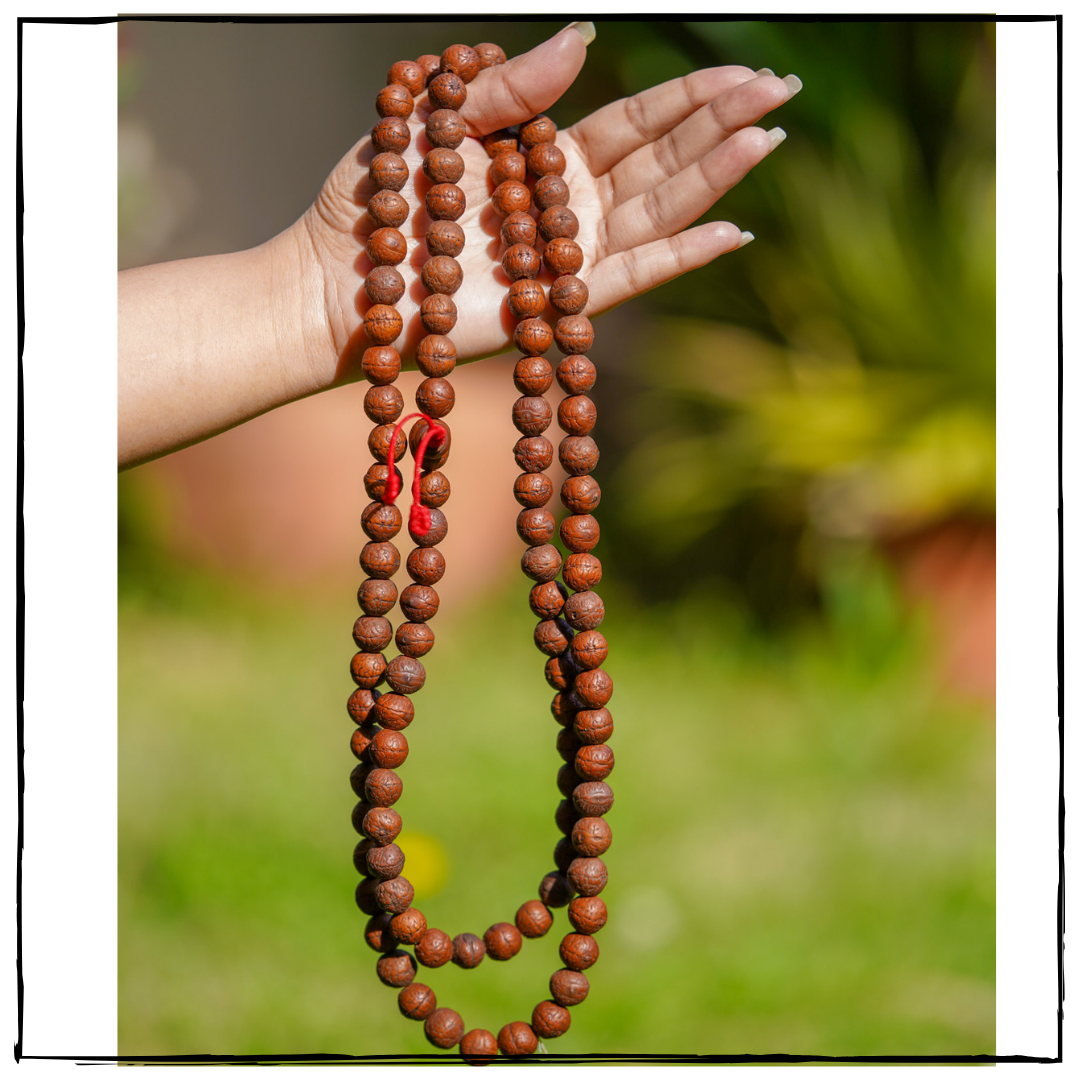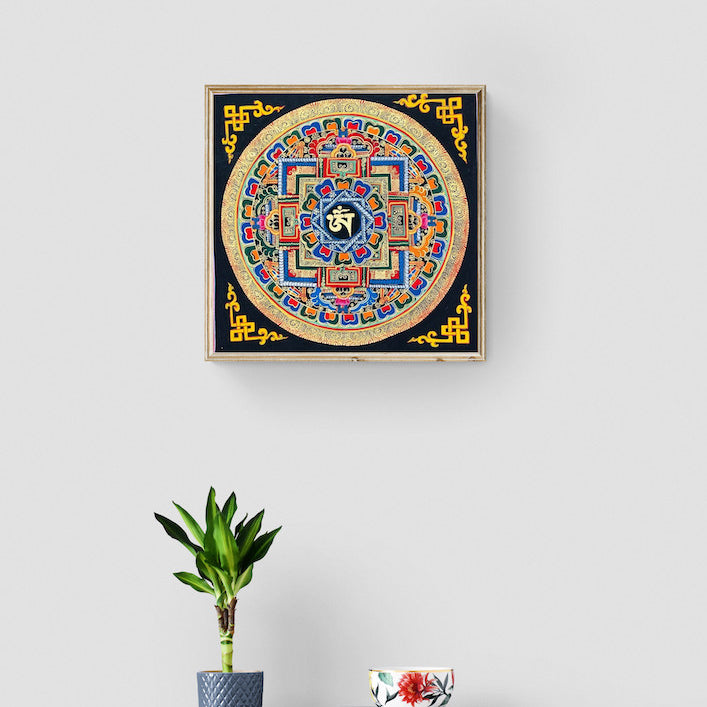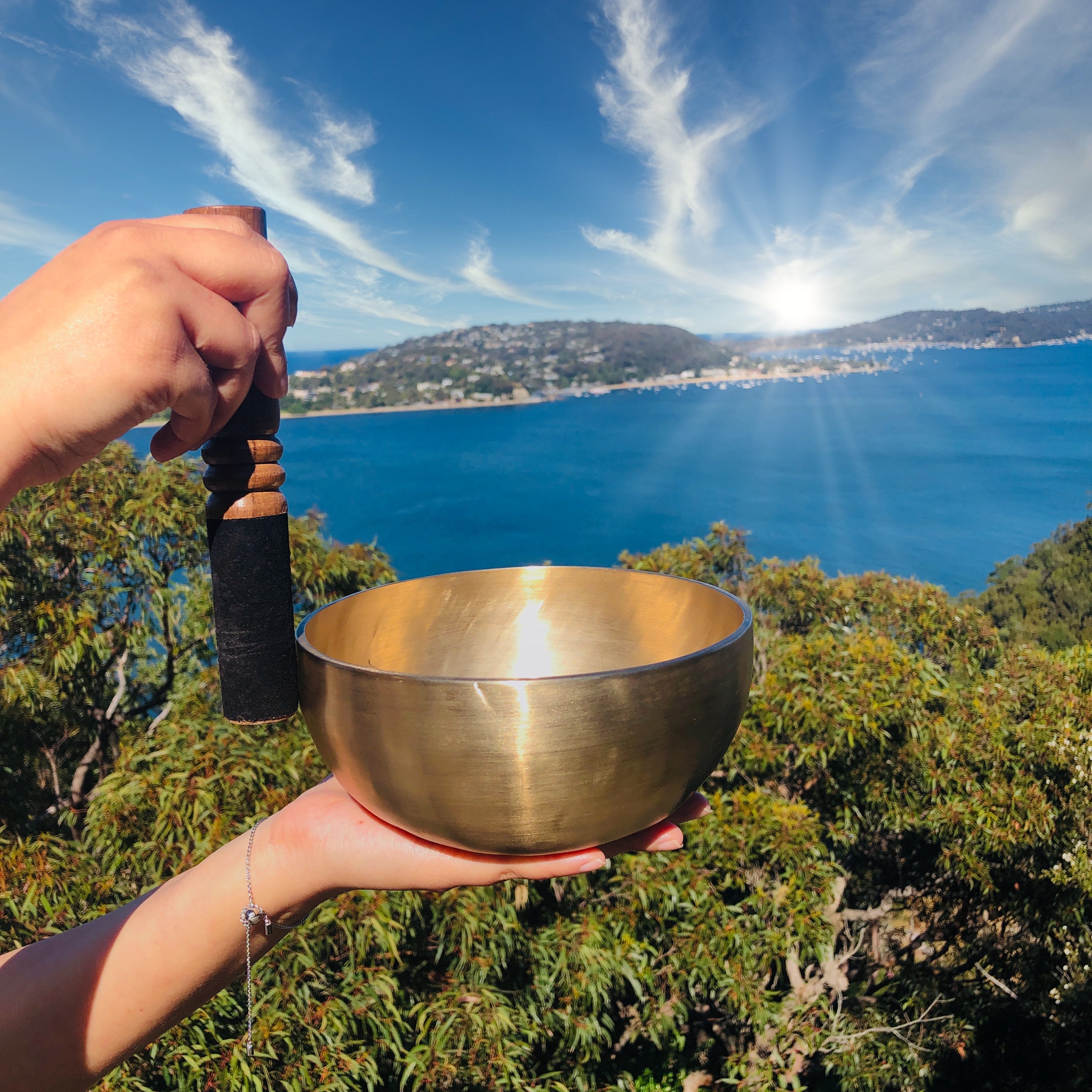Singha Zambala Thangka Painting
Couldn't load pickup availability
Description
Singha Zambala Thangka Painting portrays one of the Four Directional Wealth Deities, also known as Zambala, Jambhala, or Dzambhala. Revered by Tibetan Buddhist and other Himalayan Buddhist traditions, Zambalas are considered protectors of riches and are featured in Thangkas for numerous reasons, such as accumulating wealth, bringing prosperity, and safeguarding against financial hardships.
The core of the Thangka's composition is Zambala, pictured as a wrathful god with a mongoose and an overflowing kalasha of jewels. Zambala is portrayed in hues such as yellow, seated on a lotus throne on top of Singha that connotes purification and ascension. Finer details includes symbols of wealth and fortune, such as coins, gems, and a variety of offerings, as well as guardian figures. The picture often holds ornamental features and favorable signs around Zambala's figure.
Zambala provides the possibility of a smooth journey to financial security and success. People entreating Zambala for aid have the expectation of gaining riches and liberating themselves from monetary woes. Thangkas of Zambala are common tools used in rites and practices to evoke the deity's beneficence and power to bring wealth - both material and spiritual - to those who seek his support.
Product Specification:
- Hand Painted
- Materials: Semi-Precious Natural Minerals
- Base: Cotton Canvas
- Origination: Nepal

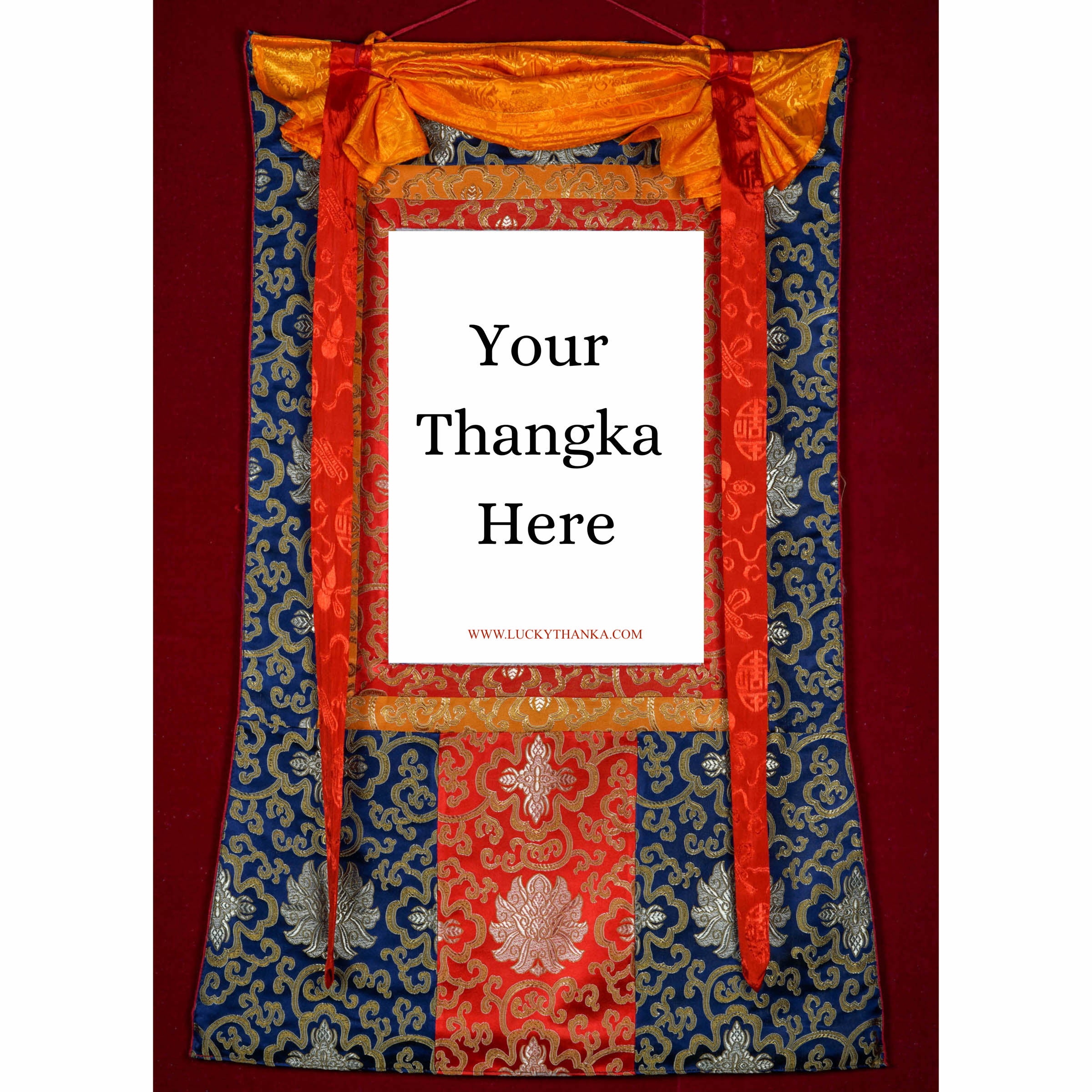
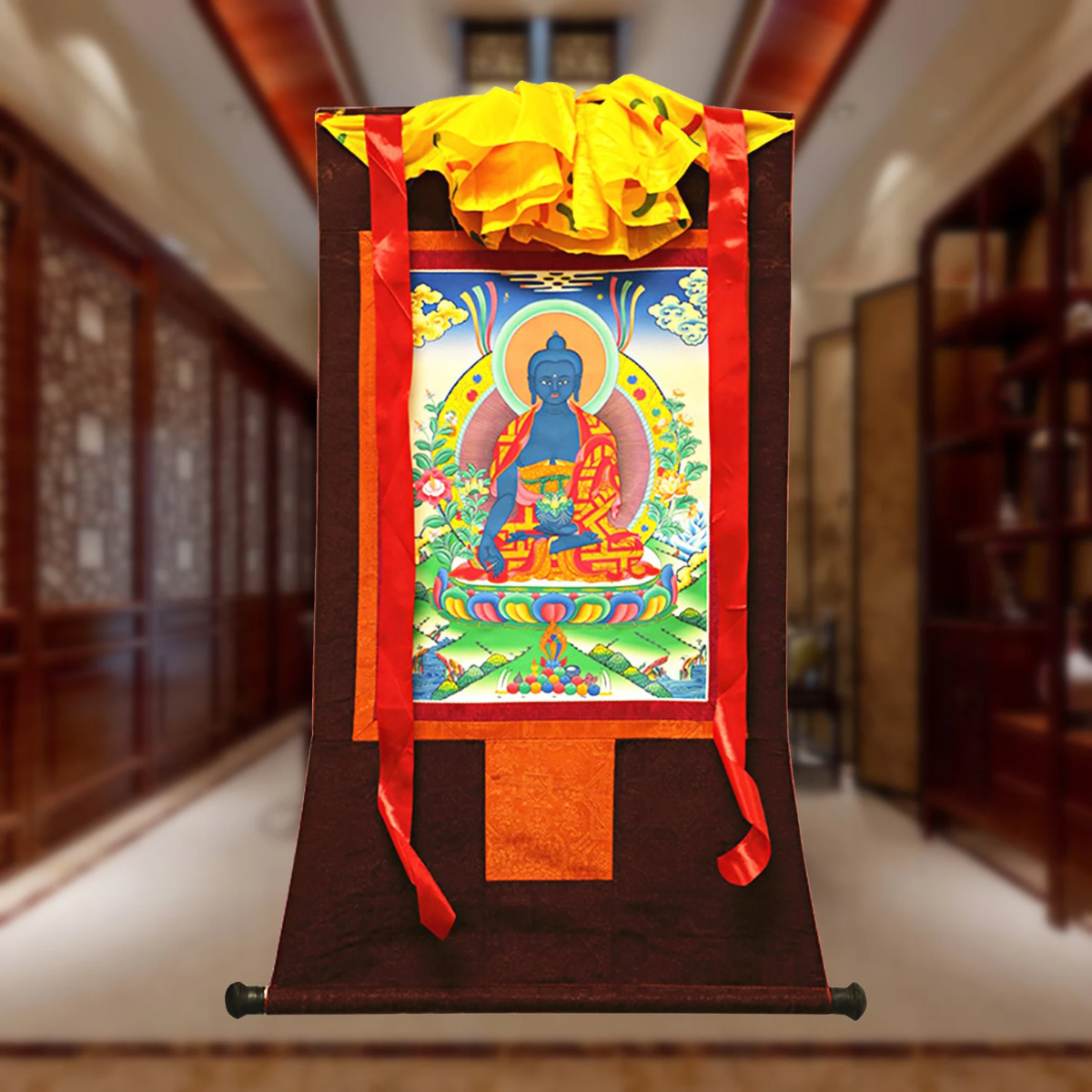
Hand Embroidery Brocade
Want to add a Brocade to your beautiful Thangka Painting? Traditional Style Brocade has been one of the most popular form of mounting as it has a greater religious merit.
Note: Make sure you have added the Thangka to your cart first.
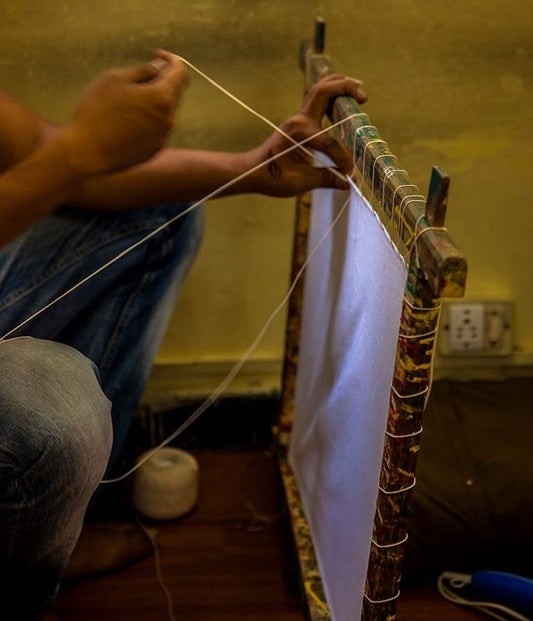
100% Cotton Canvas
Preparing the Cotton canvas before starting to paint a Thangka. This process includes washing, drying, stretching, sizing and everything needed to make a perfect base for the thangka to last for centuries.
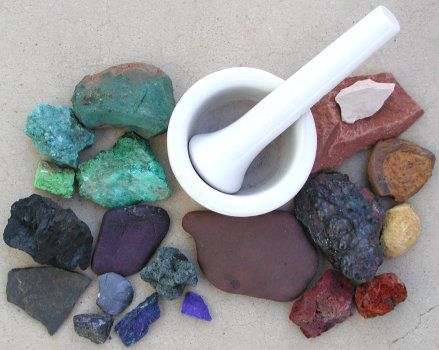
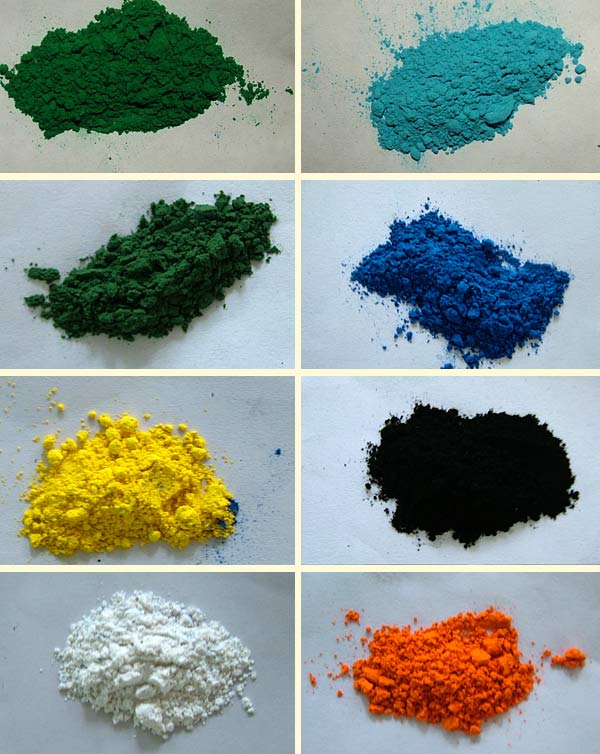
Natural Minerals
Thangka Paintings are painted using the natural minerals. These are firstly grind into the powder form and then used in the thangka as a paint.










